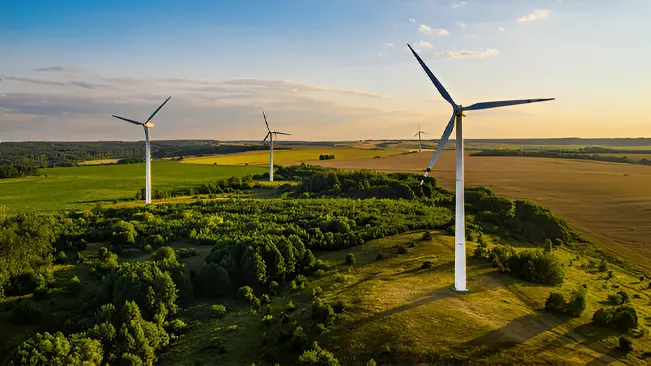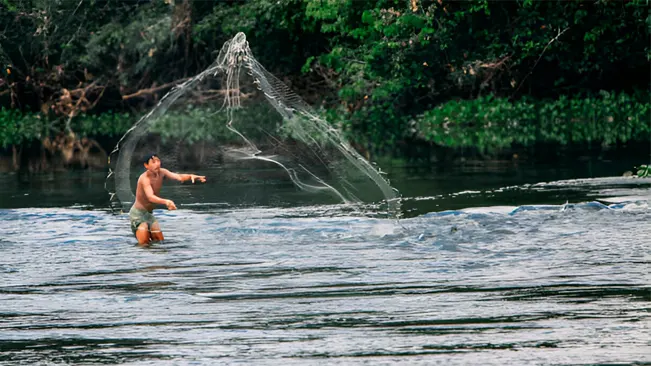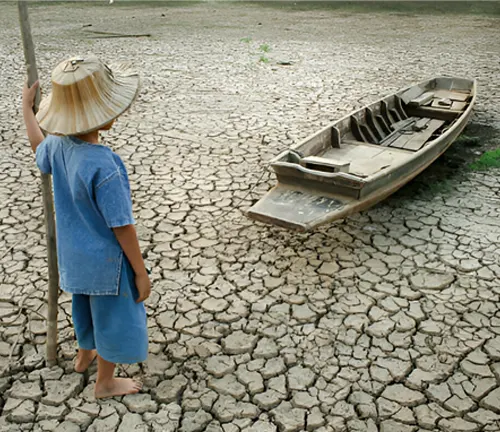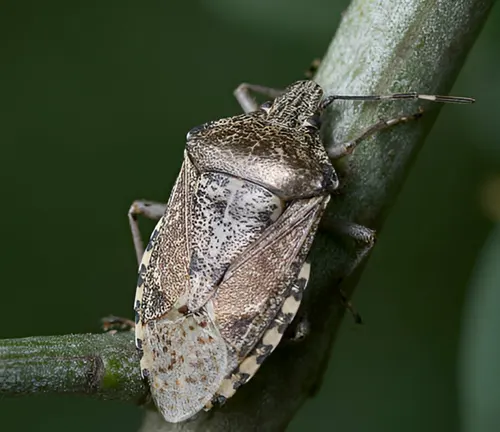Understanding Habitat Conservation
- August 21, 2024
- 0 comment
Habitat conservation is a critical component in the fight to preserve the planet’s biodiversity. As ecosystems around the world face unprecedented threats from human activities, the importance of safeguarding the natural environments that countless species call home cannot be overstated. From the dense rainforests to the vast oceans, each habitat plays a unique and irreplaceable role in maintaining the delicate balance of our global ecosystem.

Importance of Habitat Conservation
Biodiversity Preservation
Biodiversity is the cornerstone of ecosystem stability and resilience, underpinning the health and functionality of our planet’s natural systems. Diverse ecosystems offer a plethora of essential services, including pollination, which supports food production water purification, which maintains the quality of our water resources; climate regulation, which mitigates the impacts of climate change and soil fertility, which is crucial for agricultural productivity.

Habitat conservation efforts are dedicated to protecting these ecosystems, ensuring the survival of innumerable species that contribute to ecological balance. When habitats are lost, the extinction of species follows, triggering cascading effects that disrupt ecosystem functions and, consequently, human well-being. The interconnectedness of biodiversity means that the loss of even a single species can have far-reaching consequences, highlighting the urgent need for comprehensive habitat conservation strategies.
Climate Change Mitigation
Natural habitats, such as forests, wetlands, and oceans, are integral to climate change mitigation due to their significant role in carbon sequestration. These ecosystems absorb and store vast amounts of carbon dioxide from the atmosphere through processes like photosynthesis and organic matter decomposition, effectively acting as natural carbon sinks. Forests, with their dense biomass, store carbon in trees and soil, while wetlands trap carbon in their saturated soils, and oceans absorb carbon dioxide through marine plants and phytoplankton.

Protecting and restoring these habitats is vital to maintaining and enhancing their carbon sequestration capacities. Restoration efforts, such as reforestation, wetland rehabilitation, and marine conservation, can significantly increase the amount of carbon these ecosystems can store. By reducing atmospheric carbon levels, these efforts help stabilize global temperatures and mitigate the adverse impacts of climate change, such as extreme weather events, sea-level rise, and shifting climate patterns. In this way, habitat conservation not only preserves biodiversity but also plays a pivotal role in the global fight against climate change.
Cultural and Economic Benefits
Many communities around the world rely on natural habitats for their livelihoods, cultural practices, and well-being. These ecosystems provide a wealth of resources essential for daily life and economic activities. For instance, forests, rivers, and oceans offer food sources like fish, game, fruits, and nuts, as well as medicinal plants used in traditional and modern medicine. Additionally, natural habitats supply raw materials such as timber, fibers, and minerals that are foundational to various industries. Beyond these tangible resources, ecosystems also support cultural and spiritual practices, serving as sacred sites, and inspiration for art and folklore.

Ecotourism, which thrives on the beauty and diversity of well-preserved natural landscapes, generates substantial revenue and employment opportunities for local and national economies. It promotes environmental awareness and sustainable practices among tourists and communities alike. Effective habitat conservation is crucial to maintaining these diverse cultural and economic benefits, ensuring that natural resources and the cultural heritage they support are preserved for future generations. By protecting natural habitats, we not only safeguard biodiversity but also uphold the intricate relationships between humans and nature that have evolved over millennia.
Challenges in Habitat Conservation
Habitat Fragmentation
Urbanization, agriculture, and infrastructure development often lead to habitat fragmentation, breaking up large, contiguous habitats into smaller, isolated patches. This fragmentation reduces the available living space for species, disrupts migration routes, and increases the vulnerability of populations to extinction. Fragmented habitats are also more susceptible to invasive species and environmental changes.

Climate Change
Climate change poses a significant threat to habitats worldwide. Rising temperatures, altered precipitation patterns, and increased frequency of extreme weather events can degrade habitats and force species to migrate to new areas. This shift can lead to mismatches between species and their habitats, resulting in population declines and ecosystem imbalances.

Invasive Species
Invasive species can outcompete native species for resources, alter habitat structures, and disrupt ecological processes. Their introduction, often facilitated by human activities such as trade and travel, can lead to significant biodiversity loss and changes in ecosystem dynamics. Managing invasive species is a complex and ongoing challenge in habitat conservation.

Human-Wildlife Conflict
As human populations expand, interactions between humans and wildlife become more frequent, often leading to conflicts. These can result in crop damage, livestock predation, and threats to human safety. Effective habitat conservation must address these conflicts through integrated approaches that balance the needs of both humans and wildlife.

Strategies for Habitat Conservation
Ecological Restoration
Ecological restoration involves rehabilitating degraded habitats to restore their ecological integrity. Techniques include reforestation, wetland restoration, and the removal of invasive species. Restoration efforts aim to reestablish native vegetation, improve habitat connectivity, and enhance ecosystem services. Successful restoration requires long-term monitoring and adaptive management.

Sustainable Land-Use Practices
Integrating habitat conservation into land-use planning and development is crucial for minimizing habitat loss and degradation. Sustainable practices, such as agroforestry, sustainable agriculture, and responsible forestry, promote land use that is compatible with biodiversity conservation. These practices balance economic development with ecological sustainability.

Community Engagement and Education
Engaging local communities in conservation efforts is vital for long-term success. Community-based conservation initiatives empower local people to protect and manage their natural resources. Education and awareness programs foster a deeper understanding of the importance of habitat conservation and encourage sustainable behaviors.

Future Directions in Habitat Conservation
Climate-Resilient Conservation
As climate change continues to impact ecosystems, conservation strategies must incorporate climate resilience. This involves identifying and protecting climate refugia, enhancing habitat connectivity to facilitate species migration, and adopting adaptive management practices. Climate-resilient conservation aims to ensure ecosystems can withstand and adapt to changing environmental conditions.
Technological Advancements
Advancements in technology, such as remote sensing, geographic information systems (GIS), and environmental DNA (eDNA) analysis, provide new tools for monitoring and managing habitats. These technologies enable more precise mapping of habitats, early detection of changes, and informed decision-making. Leveraging technology enhances the efficiency and effectiveness of conservation efforts.
Policy and Legislation
Strong policies and legislation are essential for habitat conservation. This includes enforcing existing environmental laws, establishing new regulations to address emerging threats, and promoting international cooperation. Effective policies must be based on scientific evidence and involve stakeholders at all levels.
Integrative Conservation Approaches
Integrative conservation approaches recognize the interconnectedness of ecosystems and human societies. This involves cross-sectoral collaboration, integrating conservation into broader socio-economic planning, and addressing the root causes of habitat loss, such as poverty and unsustainable consumption. Holistic approaches ensure that conservation efforts are comprehensive and sustainable.
Case Studies in Habitat Conservation
The Amazon Rainforest
The Amazon Rainforest is one of the most biodiverse regions on Earth, yet it faces significant threats from deforestation, agriculture, and mining. Conservation efforts in the Amazon focus on creating protected areas, promoting sustainable land use, and engaging indigenous communities. Initiatives such as REDD+ (Reducing Emissions from Deforestation and Forest Degradation) aim to incentivize conservation through financial mechanisms.
Coral Reef Conservation in the Great Barrier Reef
Coral reefs are highly sensitive to environmental changes and human activities. The Great Barrier Reef, the world’s largest coral reef system, faces threats from climate change, pollution, and overfishing. Conservation strategies include marine protected areas, coral restoration projects, and policies to reduce carbon emissions and improve water quality.
Grassland Restoration in the American Midwest
The American Midwest’s grasslands have been extensively converted to agriculture, resulting in habitat loss and decreased biodiversity. Restoration efforts focus on reestablishing native prairie ecosystems, controlling invasive species, and promoting sustainable agricultural practices. Programs such as the Conservation Reserve Program (CRP) provide incentives for landowners to restore grasslands.
Conclusion
Understanding habitat conservation requires a multifaceted approach that integrates ecological, social, and economic dimensions. Ecologically, habitat conservation is essential for preserving biodiversity, which is the foundation of ecosystem health and resilience. By maintaining diverse habitats, we protect the myriad species that play crucial roles in ecosystem functions, from pollination and seed dispersal to water purification and soil formation. Socially, habitat conservation supports communities that depend on natural resources for their livelihoods, cultural practices, and well-being. Effective conservation efforts engage these communities, recognizing their traditional knowledge and practices, and fostering sustainable use of resources. Economically, preserving natural habitats contributes to long-term prosperity by ensuring the availability of resources such as food, medicine, and raw materials, and by promoting industries like ecotourism that rely on healthy ecosystems.
The challenges of habitat conservation are significant and multifaceted, encompassing issues such as habitat fragmentation, climate change, invasive species, and human-wildlife conflict. However, through innovative strategies, community engagement, and robust policies, we can address these challenges and ensure the long-term health and resilience of our planet’s habitats. Innovative strategies include the use of technology for monitoring and management, the development of climate-resilient conservation practices, and the implementation of sustainable land-use practices.
Community engagement is crucial for fostering local stewardship and ensuring that conservation efforts are culturally and economically viable. Robust policies, supported by scientific evidence and international cooperation, provide the framework for effective conservation actions. Habitat conservation is not just an environmental imperative it is a fundamental aspect of securing a sustainable future for all life on Earth. By prioritizing the preservation and restoration of natural habitats, we safeguard the essential services they provide, ensure the survival of countless species, and support human well-being and prosperity for generations to come.
Frequently Asked Questions (FAQs)
- What is habitat conservation?
Habitat conservation is the practice of protecting, managing, and restoring natural habitats to ensure the survival of species and the health of ecosystems. - Why is habitat conservation important?
It preserves biodiversity, mitigates climate change, supports human livelihoods, and maintains ecosystem services like water purification and soil fertility. - What are the main threats to habitats?
Major threats include habitat fragmentation, climate change, invasive species, and human-wildlife conflict. - What is habitat fragmentation?
Habitat fragmentation occurs when large, continuous habitats are divided into smaller, isolated patches, disrupting ecosystems and species migration. - How does climate change affect habitats?
Climate change alters temperatures and precipitation patterns, degrades habitats, and forces species to migrate, often leading to population declines. - What are protected areas?
Protected areas are regions designated for the preservation of natural resources and biodiversity, such as national parks and wildlife reserves. - What is ecological restoration?
Ecological restoration involves rehabilitating degraded habitats to restore their ecological integrity, including reforestation and wetland restoration. - How can local communities contribute to habitat conservation?
Local communities can engage in conservation initiatives, sustainable land-use practices, and education programs to protect and manage natural resources. - What role does technology play in habitat conservation?
Technologies like remote sensing, GIS, and environmental DNA analysis enhance habitat monitoring, early detection of changes, and informed decision-making. - What are some successful examples of habitat conservation?
Examples include the conservation efforts in the Amazon Rainforest, coral reef protection in the Great Barrier Reef, and grassland restoration in the American Midwest.

Evan Bennett
Forestry AuthorEvan Bennett brings over a decade of expertise in forestry wildlife management to the forefront, specializing in habitat conservation, biodiversity, and human-wildlife interaction. Evan's work ensures harmonious coexistence between wildlife and human communities through effective and sustainable practices. Continuously engaging in research and workshops, Evan stays at the cutting edge of wildlife management advancements. As a trusted advisor and contributor to leading environmental journals, Evan is dedicated to preserving the natural world for future generations.













Leave your comment